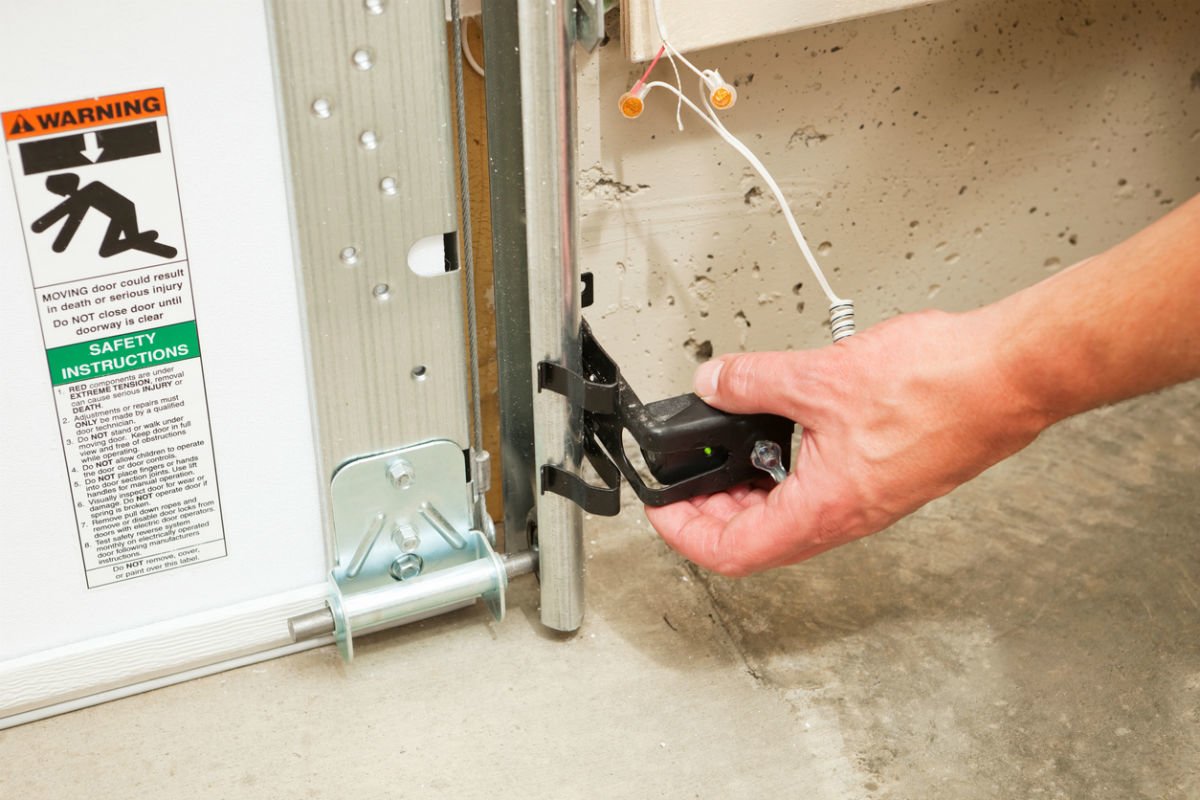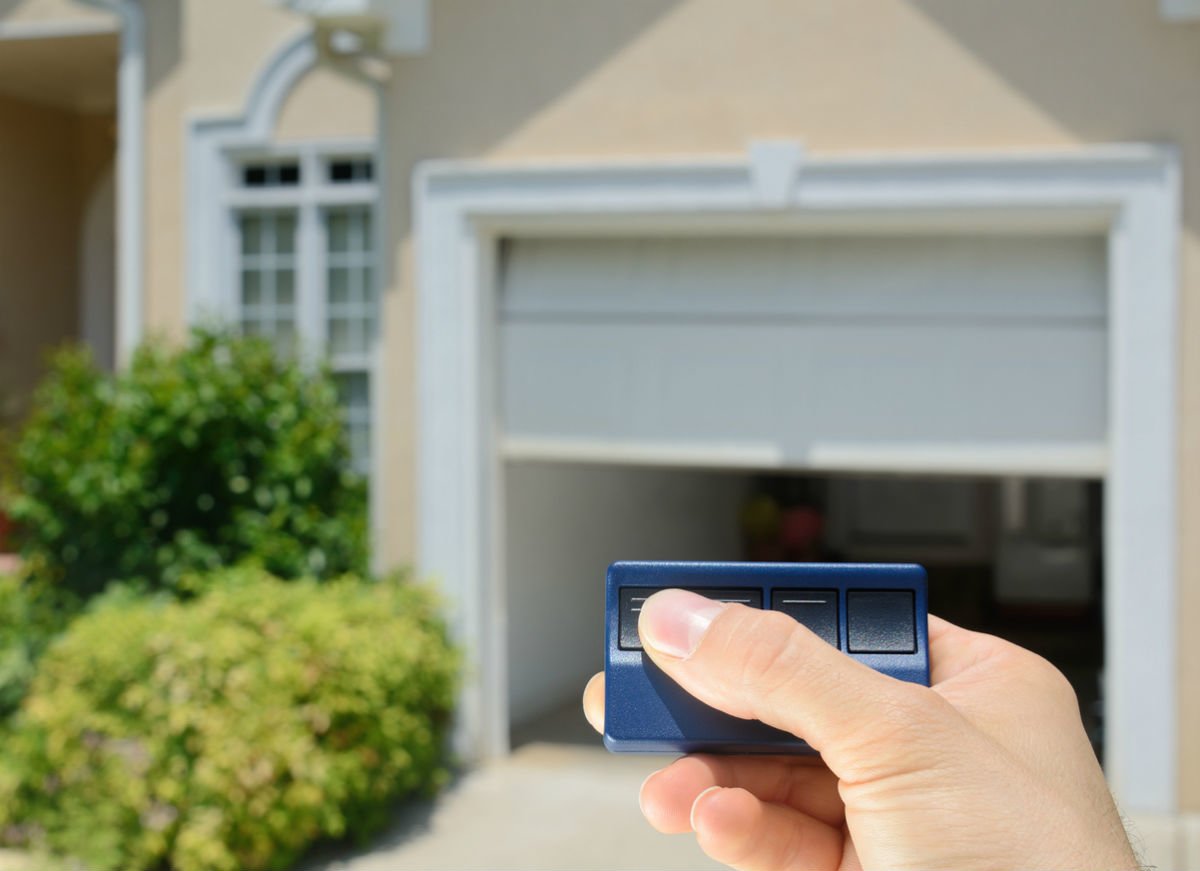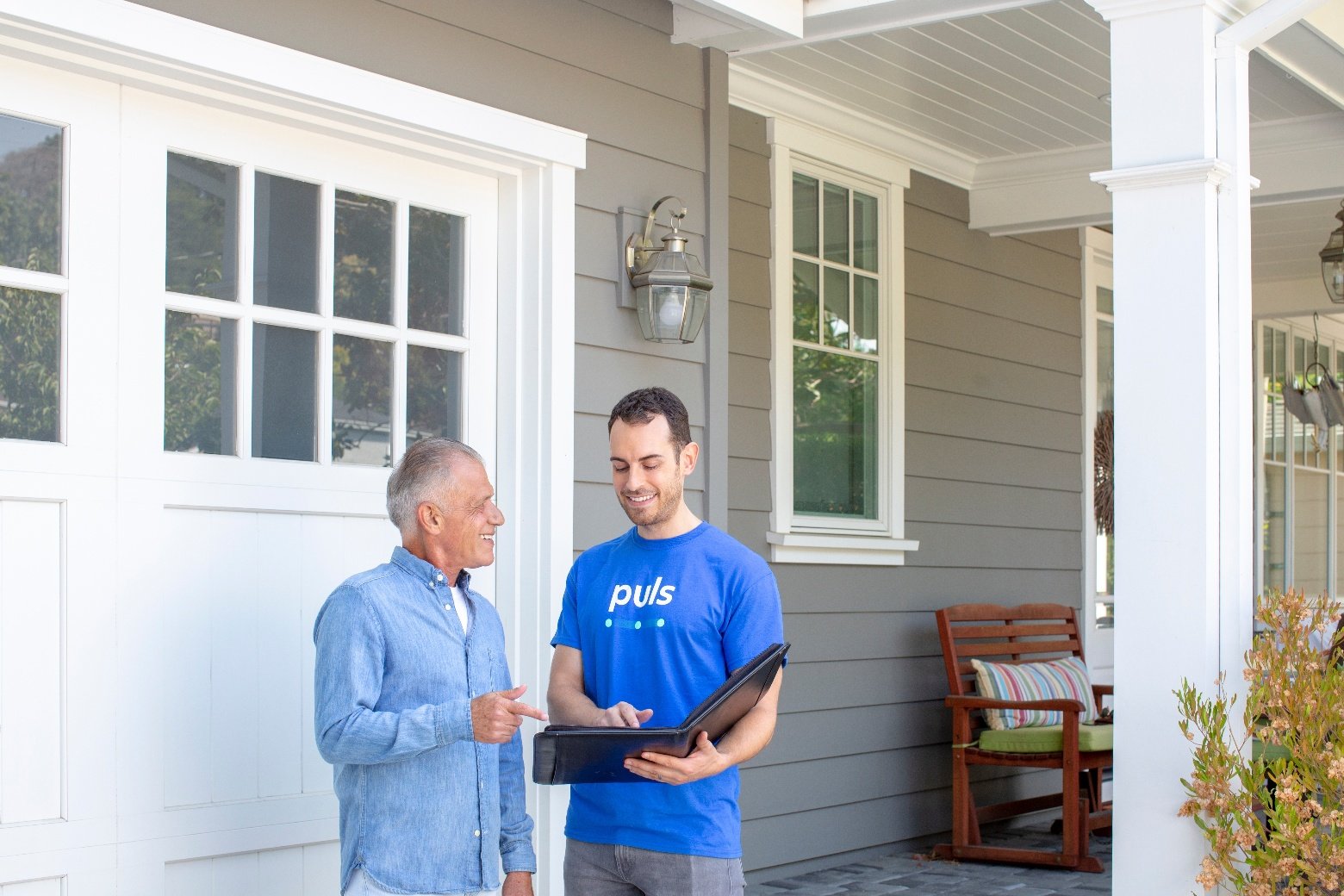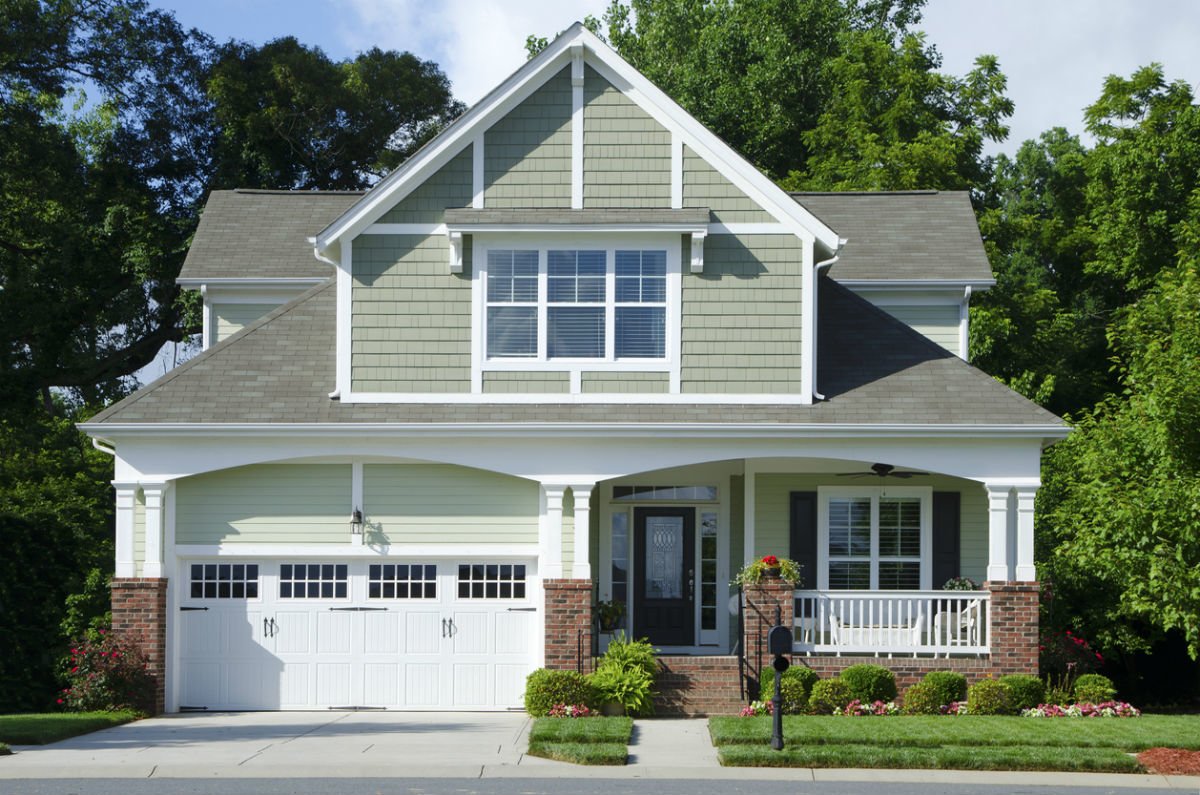We may earn revenue from the products available on this page and participate in affiliate programs. Learn More ›
A garage door opener is a complicated creature. In fact, despite its name, your garage door opener is actually a series of different systems connected together. So, as you might suspect, there’s a lot that can possibly go wrong: a door might stop responding to its remote, make a strange noise, or simply get stuck in an open or closed position.
Many repairs can be performed yourself if you’ve got the right tools and are comfortable climbing a ladder, but there are some cases where it’s much safer (and smarter) to call a professional. Follow this step-by-step guide on how to diagnose a garage door issue so that you can know with certainty whether or not you need to bring in some back-up.

1. Check all power connections.
The first thing you want to do if your garage door opener is unresponsive is to check that it’s receiving power. Have a look at the LED lights on the motor unit, safety sensors, and wall panel to see that they’re powered up. If they are not, unplug the motor and check your circuit breaker; flip the switch on any blown fuses and plug the motor unit back in.
2. Ensure that the garage door opener is unlocked.
It’s possible that the lock may be engaged. This safety feature is easily turned on and off and, when on, prevents the remote or keypad from opening or closing the garage door.
Check the green LED light on the wall-mounted garage door opener button. (It may be located beneath the plastic button, requiring you to pop the button off with a screwdriver.) If the green button is blinking, the garage door is locked. In that case, simply hold down the “lock” button for a couple of seconds until the green light stops blinking, then try your remote or keypad again.

3. Test for over-sensitive sensors.
Your garage door safety sensors are meant to prevent the garage door from closing on people, pets, cars, and any equipment that might not be tucked in all the way. There are two: one sending a beam of light, the other receiving it. Follow these tips to make sure that each is in working order.
- If the LED light on either is not shining, the sensor may think that it detects something in the path of the garage door. Often, this means that the safety feature was knocked out of alignment or blocked. Make sure the two sensors line up properly, and remove all cobwebs, dust, or other debris in the area.
- Next, follow the wire that extends from each all the way up to ensure that it hasn’t been damaged or severed along the way.
- Finally, if your garage door still doesn’t close and the light on the motor blinks, the sensors may still “detect” something blocking the way. You can override this (after making sure it’s safe to close the garage) by pressing and holding the wall-mounted garage door button. If your garage door closes properly and you’re certain there was nothing blocking the sensors earlier, the sensor itself might be malfunctioning.

4. Toy with the remote control.
More often than not, fixing the remote-controlled operation of your garage door is as simple as replacing the handheld device’s battery.
In the case that doesn’t work, you can hop up on a ladder and press and hold the “learn” button on the motor unit. Your garage door opener will look for a new remote signal—press the button on your remote so the opener can pick it up—and then the opener will store the new code. Note that this will reset all the remotes that work with your garage door opener, so you’ll have to press the button on each if you have two or three remotes.
Also, check for radio frequency interference. Sometimes LED lights used in garden lighting or home security lighting, even video game consoles, can create radio interference that will stop the opener from working. If you have any of these devices, the garage door remote may only work when they’re not in operation. The solutions are somewhat limited: Installing special antennas could boost the remote signal, or you could switch the type of light bulbs to ones that do not cause radio frequency interference.
5. Try the garage door’s keypad.
Despite the location of the wall-mounted keypad battery, it’s easy to forget that it is indeed battery-operated. If replacing the battery doesn’t do the trick, you can also try reprogramming the keypad by following the instructions on the keypad door or located in the user manual.

6. Inspect the garage door track.
The roller tracks on the sides of your garage door should be straight and clear of any obstructions. If the tracks are crooked or blocked, the garage door opener will struggle when opening or closing the door.
You can also make sure the track is well-lubricated by applying a non-permeable garage door lubricant. Note: WD-40 is great for a lot of things, but it’s not your friend here. Opt for a lubricant designed specifically for garage doors to maximize efficiency and prevent leakage and mess.
7. Get the motor running.
There are several things to check in your garage motor unit. But first things first: Be sure to unplug the unit so you don’t get an electric shock.
- Open the back of the motor unit with a screwdriver or socket. Bear in mind that the screws on different parts of the cover may be different sizes, so keep them organized for when you replace the cover.
- With the motor cover open, check the antenna wire hanging down from the green logic board to make sure it’s securely attached. If it’s coming off the logic board, you’ll want to re-solder it securely. If you’re concerned that your remote signal isn’t strong enough, as covered earlier, you can also solder a thicker wire on in its place.
- Check the connection joints on the logic board and see if everything is connected securely. Re-solder any loose connections.
- If your garage door opener is struggling to get the job done, inspect the capacitor—a white cylindrical piece that works a little bit like a battery. Often, a faulty capacitor will be bulging or leaking, just like a bad battery, but sometimes there’s no outward sign that the capacitor has failed. While you can spring for a capacitor tester, if you won’t be using the tester often, it’s actually cheaper just to check your garage door opener’s model number and buy a replacement.
- Finally, check out the controller wires going into the garage door motor (which look a bit like the wires on an old stereo system, with the copper hanging out and a plastic release button) to see that they’re securely connected and free of corrosion.

8. Look for signs of wear and tear around the motor unit.
A lot of black plastic crumbs or shavings on top of the gears in your motor unit may indicate excessive wear on the chain and sprocket located above. Now, a small amount is not a cause for concern, as these can come from regular wear and tear. More than that might fall as a result of your chain being too tight. You do want a bit of slack on the chain, though not so much that it makes a clanging noise when it moves.
Have a look at the gears and sprocket. If the chain is drooping, it’s possible that it was wound too tight and the sprocket on top of the motor unit has snapped or cracked. Check inside the unit to see that the gears aren’t stripped and are in good working order. If you need new gears or the sprocket is broken, they are sold together as a unit and should be entirely replaced.

9. See that the torsion spring is balanced.
First, make sure that the garage door is fully closed so that when you engage the release next by pulling on the brightly-colored cord above it won’t come crashing down and cause damage or injury. Then, lift the garage door halfway. If the spring is properly balanced, lifting the door open shouldn’t require too much effort on your part, and the door should remain in the half-open position without starting to sag down.
At this time, do a visual inspection of the torsion spring, which is located horizontally along the top of the garage door. Check to see if there are any gaps between the coils (indicative of a loose spring) or gaps (which mean the spring has broken completely).
Do not attempt to tighten or replace your torsion spring unless you have prior experience. Torsion springs are dangerous and can cause severe or even fatal injury.

When all else fails, call in the professionals.
If you’d like Puls to diagnose your garage door issue for you—as well as ensure that your garage door is in all-around good shape—you can book a time slot for a local Puls technician to visit, often on the very same day.
One of our highly-vetted technicians will perform a 25-point inspection and diagnostic that is free if you choose to make a repair with Puls. We bring all the necessary safety equipment, tools, and parts to you, so all you’ll have to do is sit back, relax, and let us handle the rest. Plus, all of our parts and labors come backed by our 90-day guarantee, meaning that we’ll come back out to you again for free should anything happen. If no repair is needed, the technician charges just $39 for coming out—about half of the national average for similar inspections.
So, what are you waiting for? Book a garage door repair online to have our technicians perform a thorough in-home diagnostic within the same day.
A version of this article first appeared on Puls. This content has been brought to you by Puls. Its facts and opinions are those of BobVila.com.

